The Future of Efficient EV Lithium-ion battery and electrochemical energy storage system: Exploring CCS (Cell Connection Systems)
How are batteries installed in EVs?
As the electric vehicle market continues to grow, the importance of the battery pack and its component parts cannot be overstated.
Batteries in EVs are installed as cells, modules, and packs. These cells, modules, and packs are groups of batteries gathered together. A cluster of cells is called a module and a cluster of modules is a pack. Thus, in an electric vehicle, batteries are installed in the form of packs. For example, every Tesla electric car comes with two battery packs. One of them consists of several battery modules and in turn, thousands of cells. The smaller battery of 12 Volt is used to power headlights, air conditioners, LCD screens, and so on.
Electrical connectors play a crucial role in connecting individual cells and modules within the battery pack of an electric vehicle. Examples of EV bus bars used for this purpose include cell connection system, wires, and other distribution connectors.
At the heart of the battery pack is the cell connection system (CCS), which plays a critical role in ensuring the reliable performance and longevity of the battery.
At the heart of the battery pack is the cell connection system (CCS), which plays a critical role in ensuring the reliable performance and longevity of the battery.
The CCS combines individual cells in a parallel and series configuration, providing both energy and power for the pack and critical sensor data to the Battery Management System (BMS). This information is used to monitor and control the charging and discharging of the battery, ensuring its safe and efficient operation.
What is CCS?
Cell Connection Systems (CCS) are integral components in both EV Lithium-ion battery and electrochemical energy storage solutions, specifically within battery packs.
Cell Connection System (CCS) is a single piece bus bar solution, integrating PCB/FPC/FFC/FDC/FCC (Signal Acquisition and Transmission) with aluminum bus bar (Power distribution).
They are responsible for the safe and efficient connection of individual cells within a battery. Each cell in a battery pack has a specific role, and CCS ensures that these cells work together harmoniously to provide reliable power output.
Cell connection systems (CCS) provide high-voltage connectivity, signal acquisition and transmission such as temperature and voltage sensing information to the Battery Management System (BMS).
The CCS also supports monitoring and controlling the charging and discharging processes, ensuring the safety of both the battery and the vehicle.
CCS plays a pivotal role in optimizing battery performance by managing the connection between cells, balancing their charge, and ensuring that the overall battery system functions efficiently. This system is vital in various applications, from electric vehicles to electrochemical energy storage system of both photovoltaic power generation and wind power generation.
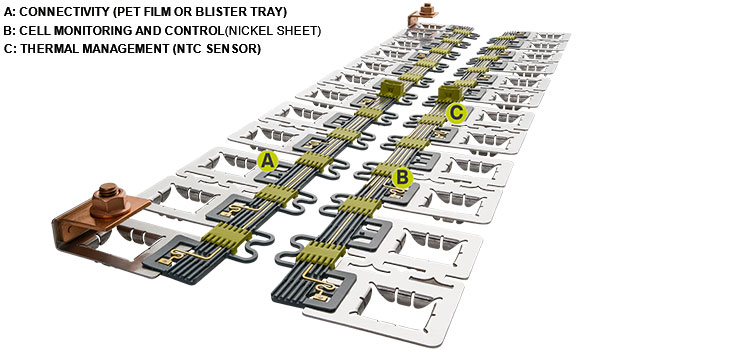
The Importance of CCS in Modern Battery Systems
As we move towards a more energy-efficient and sustainable future, the role of CCS becomes increasingly important. Here are some key reasons why CCS is crucial:
Enhanced Safety: CCS helps prevent potential issues such as short circuits and thermal runaway, which can occur if cells are not properly connected and managed.
Improved Performance: With CCS, each cell within a battery pack is monitored and balanced to ensure optimal performance.
Extended Battery Life: By preventing uneven wear and tear on individual cells, CCS helps maintain the overall health of the battery, leading to fewer replacements and lower long-term costs.
Increased Efficiency: By ensuring that cells are connected and balanced correctly, CCS minimizes energy losses and maximizes the usable power output of the battery.
How CCS Works: A Closer Look
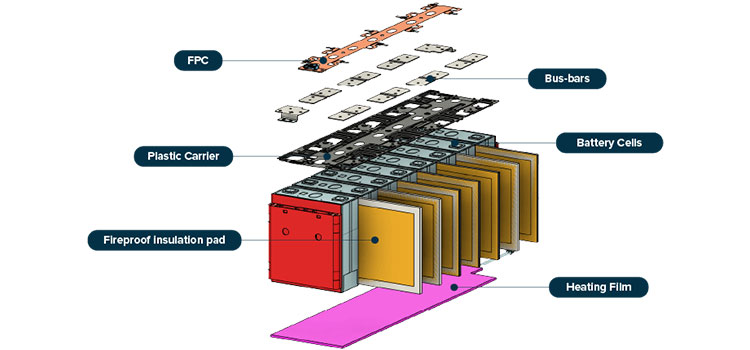
Understanding how CCS functions requires a look at its key components and processes:
Cell Balancing: One of the primary functions of CCS is to balance the charge across all cells in a battery pack. This ensures that each cell is operating within its optimal range, preventing overcharging or deep discharging, which can lead to reduced performance or damage.
Monitoring and Control: CCS systems are equipped with sensors and control mechanisms that continuously monitor the health and performance of each cell. This real-time data allows for adjustments and optimizations to maintain the overall efficiency and safety of the battery.
Thermal Management: CCS also plays a role in managing the temperature of the battery cells. Proper thermal management is essential for maintaining performance and preventing overheating, which can lead to safety hazards and reduced battery life.
Connectivity: The physical connections between cells are carefully designed to ensure reliable and efficient power transfer. High-quality connectors and wiring are essential for minimizing resistance and ensuring consistent performance.
Applications of CCS
CCS is used in a wide range of applications, such as Electric Vehicles, photovoltaic and wind energy storage, consumer electronics, as well as industrial applications. Each benefiting from the enhanced performance and safety provided by these systems.

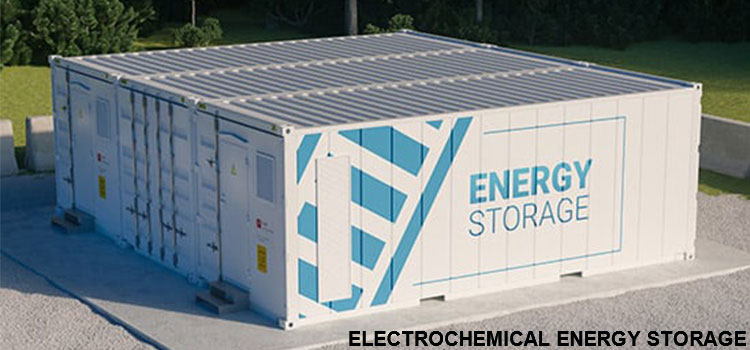
Evolutionary history and Future innovation trends in CCS:
FCC to replace FPC
ongoing evolution of signal acquisition and transmission technology:
At the very beginning of EV industry booming in 2010s, engineer integrates wiring harness or PCB into CCS as the signal acquisition and transmission solution.
As the electric vehicle market continues to grow, engineers evolves automotive lithium-ion batteries to be more lightweight and more compact.
Since around 2020, FPC (Flexible Printed Circuit) replaced wiring harnesses and PCBs gradually, growing to be the most widely used signal acquisition and transmission solution in CCS.
Driven by aggressive challenge of cost reduction in both EV industry and electrochemical energy storage industry, CCS manufacturers have been collaborating with lithium-ion battery manufacturers to develop low-cost signal acquisition and transmission technologies, which include FFC, FDC, and FCC, since 2022 until now.
In the middle of 2024, FCC type laminated CCS stepped into mass automatic production. This demonstrates that FCC type lamination CCS is replacing FPC type CCS and will grow to be the ultimate low-cost signal acquisition and transmission solution of CCS within next 3 to 5 years.

ongoing evolution of CCS carrier type
At the very beginning of EV industry booming in 2010s, all components of a piece of CCS which including wiring harness, aluminum bus bars, sensors and connectors are carried by injection molded plastic tray.
Along with TESLA kickoff EV assembly in Shanghai China in 2018, China local lithium-ion battery and subcomponents are required mandatorily to be more and more lightweight and compact. In 2020, dual PET film type laminated CCS was nominated into mass production by world EV giant for her both EV and electrochemical energy storage system plant.
since 2022, blister tray type CCS grew to be most popular CCS in China due to cost competitiveness and easy automatic production.
Since 2024, single PET film type laminated CCS stepped into mass automatic production. This demonstrates that single PET lamination CCS is replacing blister tray CCS and will grow to be the ultimate low-cost solution within next 3 to 5 years.
In the not too distant future, wireless communication might be an optional solution for signal acquisition and transmission. Under the circumstance, Tray less CCS will be a possible CCS solution finally.
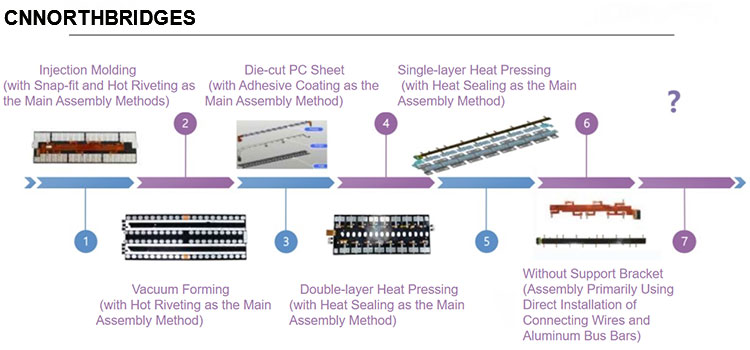
Some other key trends and innovations include:
Integration Designs: Future CCS designs are expected to be more integrated, allowing for easier upgrades and replacements. In the future, CCS may integrate the traditional BMS slave control functions.
Sustainability: Since manufacturing processes for FPC includes environmentally unfriendly chemical etching and high-energy-consumption reflow soldering, environmentally friendly and low-cost signal acquisition and transmission solution, such as FCC, is bound to replace FPC.
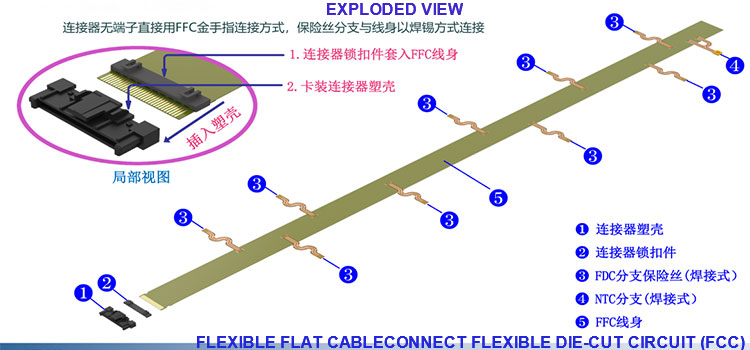
Why choose NORTHBRIDGES Cell Connection System for your
EV and electrochemical energy storage?
NORTHBRIDGES’ partnership supplier has entered this industry since 2011 and have accumulated extensive technical experience and numerous patents in lithium-ion battery industry and electrochemical energy storage field.
We have partnered with our customers and delivered bus bar and CCS solutions for Hybrid & Electric Mobility.
Our end customers include more than ten lithium-ion battery manufacturers and electric vehicle manufacturers such as CATL, Tesla and Volkswagen.
Annual volume of CCS delivered to customers exceeds six million pieces.
CCS Cost reduction by 18%~25%
In most operation scenarios, different types of cell connection systems are all capable of satisfying both assembly specifications and basic power distribution and signal acquisition and transmission requirement for the same kind of lithium-ion battery module. However, different cell connection system vary in cost.
On base of a 782mm*300mm 1P20S lithium-ion square battery module, the following chart 1 compares the cost of various CCS respectively.
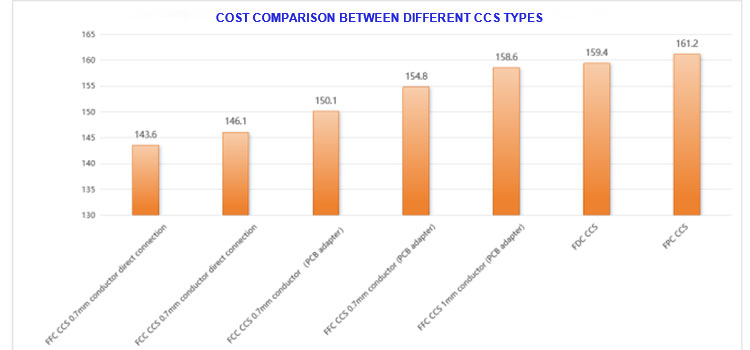
The following chart 2 demonstrates the cost difference among different signal control components of CCS, for your reference.
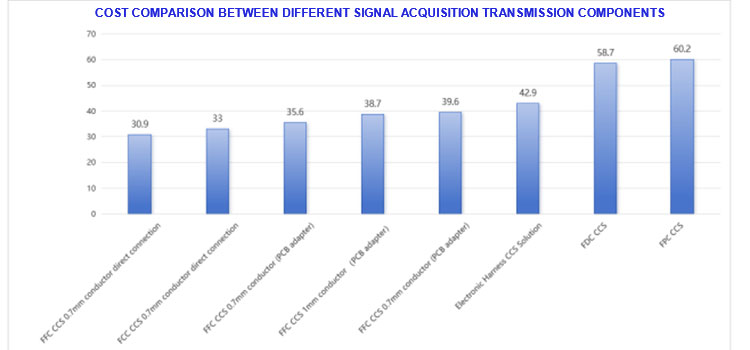
Conclusion:
From the viewpoint of cost difference among different signal control components of CCS, FCC will be cheaper than FPC by 18%~25%.
According to experience from NORTHBRIDGE partnership supplier, FCC type single-layer PET film laminated CCS will lead to more than 25% cost saving than FPC type blister-tray CCS.
Contact: Windy Lian
Phone: 13862120662
E-mail: 13862120662@163.com
Whatsapp:
Add: Room 201-334, Zone E, Jianye Science Park, No. 389 Danfeng Road, Mudu Town, Wuzhong District, Suzhou City, China
We chat
